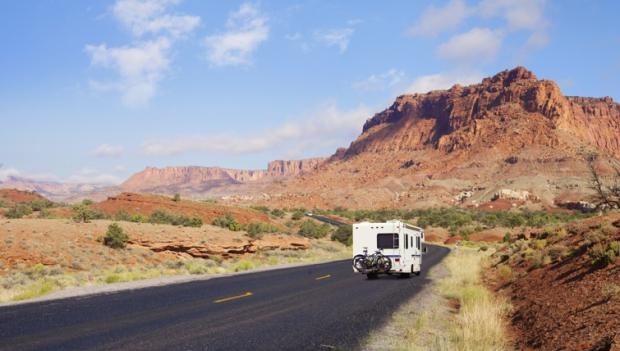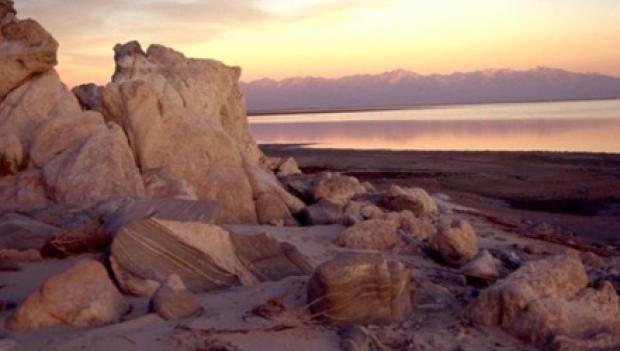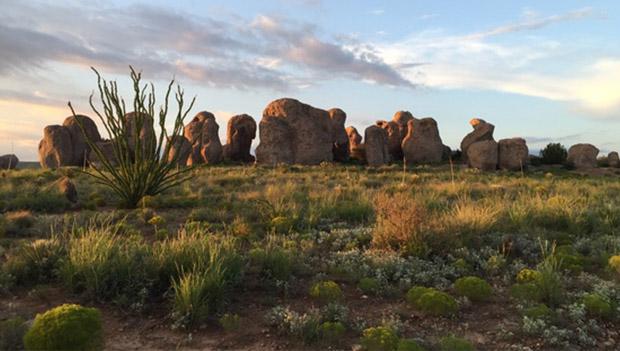Where and How to Camp in the Desert this Fall

With searing summer heat giving way to pleasant fall temperatures, autumn is the perfect season for desert camping. Fall desert camping is generally less crowded than the popular spring months, giving you plenty of space and solitude to explore America’s iconic arid landscapes. Thanks to shorter days, this time of year is also great for stargazing in the desert. Below are some of our favorite spots for fall desert camping, followed by our three big tips on how to camp in the desert.
Big Bend Ranch State Park, Texas
Why We Love It
- Remote and large
- Home to a wide variety of animals
- Water activities available too
This spacious park, covering over 300,000 acres, is home to more than 1,200 species of plants, 450 species of birds and 75 types of mammals, including ring-tailed cats, mule deer and badgers. With the closest major city, El Paso, being a 6-hour drive away, this remote park is a wilderness paradise. Many come for the hiking, animal-spotting and bird-watching, but canoeing and rafting down the Rio Grande are popular activities too.

Navajo State Park, Colorado
Why We Love It
- Plenty of water activities
- Home to a wide variety of animals
- Cooler fall temperatures
Saddling Colorado and New Mexico, Navajo State Park is known as “Colorado's Answer to Lake Powell.” A giant reservoir at over 15,000 surface-acres of water, Navajo boasts year-round boating, fishing and camping. There is also plenty of opportunity to explore nearby trails and sight wild turkeys, deer and fox. Of course, the big draw are water sports, with campers filling time by sailing, water-skiing, boating or fishing for bass, northern pike, trout, bluegill and catfish. With 138 campsites, you’ll more than likely have plenty choices when making a reservation. Navajo State Park also gets cooler temperatures than most other desertscapes. Highs in the fall range from the high-70s to low-50s, and lows are chillier still from high-50s to the low-20s.

Antelope Island State Park, Utah
Why We Love It
- Unique desert island ecosystem
- Home to large herd of American bison
- Great opportunities for nature photography
A unique desert campground, Antelope Island State Park is a desert island in the middle of the Great Salt Lake, a part of the larger Great Salt Lake Desert. With 52 campsites, this park is perfect for an autumn weekend of picnicking, saltwater bathing, hiking, bird-watching or shooting nature photography. Wildlife viewing is abundant on this island of grassland and marshes. The island is home to over 600 American bison, deer, coyotes and birds. Sunset-watching over the Great Salt Lake also makes this a very memorable camping experience.

City of Rocks, New Mexico
Why We Love It
- Amazing volcanic rock formations
- Great sunsets and stargazing
- Trails for recreational activities
Make sure to stop between Silver City and Deming to explore the City of Rocks. Located in the scenic Chihuahuan desert region of southwestern New Mexico you'll get to explore the "city" of geologic rock columns and pinnacles that rise up to 40 feet tall. Additional trails around the park are available for hiking, biking and birding. Stay at one of the 27 tent campsites to stargaze next to the unique landscape making it a great spot for campfire stories with the family.

3 Tips for Fall Desert Camping
Fall desert camping has its own particular challenges, so we’ve included three big tips on how to camp in the desert and to make your trip memorable for all the right reasons.
1. Load up on Water
Desert temperatures begin to drop in fall, but can still hit triple digits, particularly in the California and Arizona deserts. Excessive temperatures are less likely in late-October through November, but a pleasant 80 degrees is still warm enough to cause dehydration. In other words, don’t let “cooler” fall desert temperatures trick you into under-packing water.
Plan on having a minimum of one gallon per day per person. High-exertion activities, like long hikes, mean bringing more water. Of course, check the weather before you leave in case temperatures are expected to rise during your visit, potentially requiring additional drinking water.
Pro Tip: Consider your need for non-potable water. If potable water is not offered, you may need to haul in water for bathing, dish washing, and drinking.
Recommended: Camping Water Hacks: How to Conserve, Purify & Protect Water
2. Pack Layers
Daytime temperatures can spike in the desert and then plunge 40-degrees by nightfall. Prepare for drastic temperature swings by packing layers of clothing. Think light clothes for the day, like breezy shorts, tank-tops, sun shirts and wide-brimmed hats. Evenings will mean changing into pants, pull-overs, jackets, and beanies. Remember that the desert can be windy, picking up sand with high winds, so pack a wind-breaker and a face mask or bandana too if desired.
Later in the season, desert autumn nights can dip into the 30s. Temperatures this low require additional layers, including light to medium base layers, preferably made of wool. Also, be prepared to throw your favorite puffy jacket and long johns into your bag.
Pro-Tip: Find out the temperature rating of your sleeping bag. This rating tells you at what temperature range most people would feel comfortable while sleeping in the bag. Packing an extra blanket and/or a bag liner can help with insulation.
Recommended: How to Prepare for All Kinds of Camping Weather
3. Plan Tent Placement
Fair skies may welcome your fall desert camping trip, but be prepared for any weather conditions. Heat, chill, wind, and even rain, can befall the desert in autumn. In early fall, substantial rain and flash flooding may come by way of the North American Monsoon. This season, from July through mid-September, is characterized by noticeable increases in rain and thunderstorms across the arid American southwest.
To beat the heat, place your tent in the shade of a tree or cliff. Bringing a pop-up shade shelter, or a tarp strung overhead. If it’s hot, use the wind to your advantage by having the tent entrance face the gusts. Keep your tent vents open to allow the wind to circulate through. Beware that desert winds can carry considerable dust and sand, so you may want to shield tent openings with a tarp or rain fly to help keep out debris. Also, stake down your tent well to prevent if from flying up in the wind.
To beat the rain, set-up your tent on raised ground. Make sure you have a rain fly for any potential precipitation. This piece extends from the tent and should be waterproof.
Pro Tip: Waterproofing sealants can be purchased and sprayed on any camping gear. Waterproofing the seams of your tent each season is a good way to ensure precipitation stays out.
Check with your Local Government Organization
Many policies have been established to counter and control the coronavirus outbreak. State and local officials have been taking decisive action to stop the spread. The policies vary by state, sometimes to a great degree. When you book a reservation, make sure to review the park and state's latest rules and regulations prior to your visit.
For COVID-19 updates, please visit our Impacted Park List and Reservation Guide for the latest information.